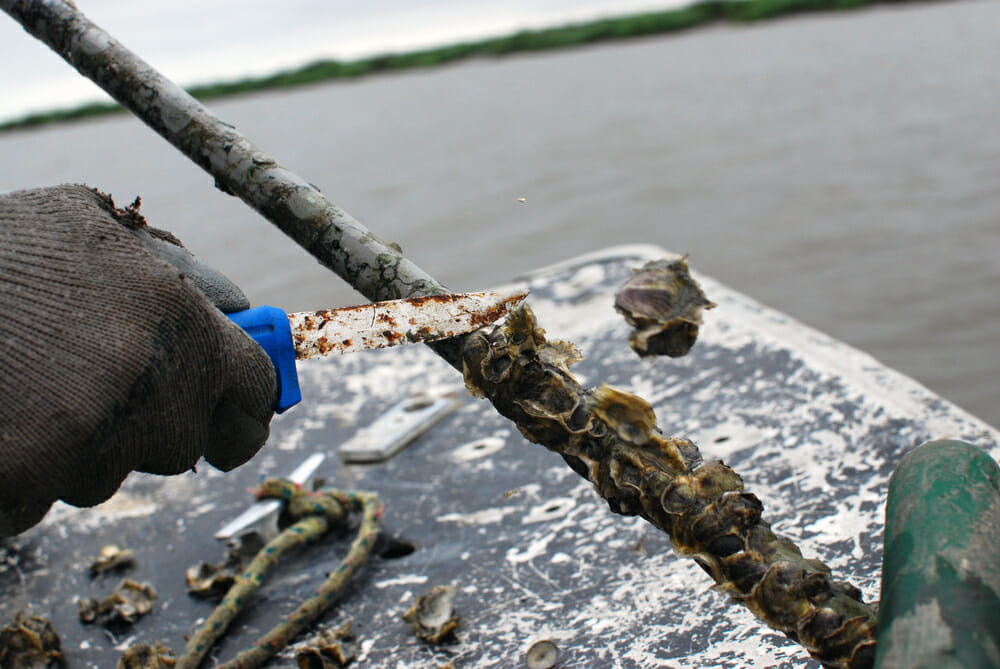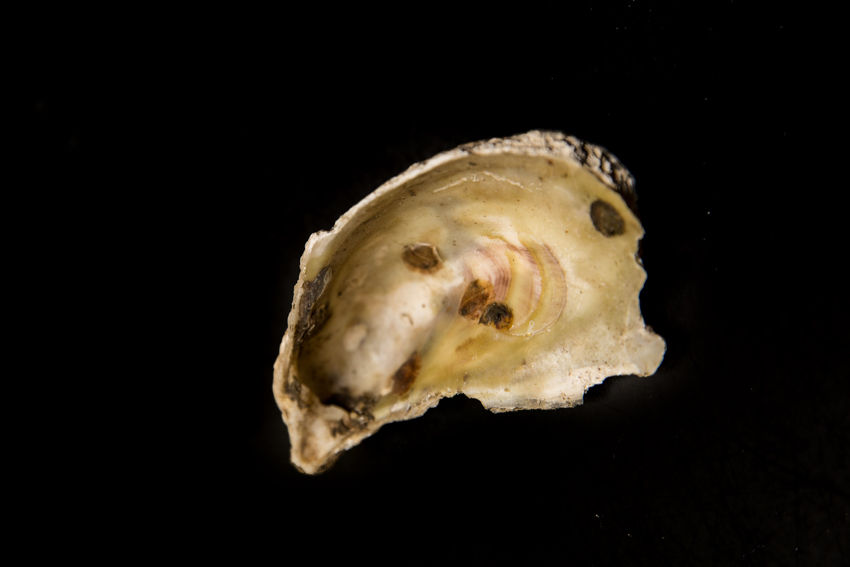

In extreme circumstances, natural recruitment compares favorably with hatchery-based production. These comparisons show that, in certain circumstances, natural recruitment can provide significant increases in biomass. Comparison of spatfall by region to aquaculture production with an estimation of spat production and potential resultant harvest Region Current practices for deployment of hatchery seed are a minimum of 1 million/acre for oyster leases and up to 4 million/acre for sanctuaries. These are compared with hatchery plantings of 1 million and 2 million spat/acre. The table also includes Bay-wide average and two scenarios using hatchery seed. Table 1 shows comparisons of three areas with different recruitment histories to calculate natural spat production and potential harvest. Using survey data from 2000 thru 2012, we estimated total oyster production for different regions of the Bay.

With 1,500 bushels per acre of available shell at a site, we used the amount of shell and expected natural spatfall to predict the actual number of oysters likely to be produced. We chose the mean of 1,500 bushels of available shell per acre. Knowing How Much Shell is Available for Larvae to Set on is Criticalĭata show a range of 0 to 3,238 bushels of available shell per acre. If any of these components are lacking, significant oyster settlement will not occur.
 Suitable substrate for larval oysters to attach and metamorphose into spat. Water quality at the setting location conducive for settlement and larval survival. Competent oyster larvae at the correct developmental stage in the water column. For natural oyster recruitment to occur, there must be: We used data generated from restoration projects in Maryland compared with information from experts in other regions to generate and verify the estimates of the survival of newly recruited oysters to harvestable size. There are 2,200 bushels of shell in an acre-inch and 275 adult oysters in a market bushel. To compare the effects of power dredging on recruitment and production, we made assumptions based on prior studies. We found one study that indicated that bagless dredging decreased the amount of suitable shell an average of 22% (8-29%). Additional studies that refine these data will allow more substantial analyses. The surveys also do not provide the data required to determine the spatial extent of shell on a discrete reef site. Researchers conducted a few surveys to determine the amount of shell on a reef but these do not cover all oyster production areas of the Bay. The first is the number of oysters found in a unit of reef substrate (e.g., bushels) and second is the total volume of reef substrate. These qualitative data are spat per bushel of shell found during sampling cruises.Įstimating the size of a new year-class of oysters on a reef requires two types of data. One weakness in spat production data is that they are qualitative and do not allow accurate calculation of the total number of new oysters in the population. We used data from surveys for computations in this report. We compare power dredging and natural recruitment to rebuild biomass to contemporary aquaculture techniques. This paper evaluates the cost-effectiveness and effects on production of restoration options. To understand the effect of dredging on populations, we analyzed data from scientific studies to predict the likely outcome of these activities. This has created problems for managers who must consider multiple factors in regulating fisheries. Scientific and environmental communities dispute this claim, pointing to differences between bottom renovation and recruitment.
Suitable substrate for larval oysters to attach and metamorphose into spat. Water quality at the setting location conducive for settlement and larval survival. Competent oyster larvae at the correct developmental stage in the water column. For natural oyster recruitment to occur, there must be: We used data generated from restoration projects in Maryland compared with information from experts in other regions to generate and verify the estimates of the survival of newly recruited oysters to harvestable size. There are 2,200 bushels of shell in an acre-inch and 275 adult oysters in a market bushel. To compare the effects of power dredging on recruitment and production, we made assumptions based on prior studies. We found one study that indicated that bagless dredging decreased the amount of suitable shell an average of 22% (8-29%). Additional studies that refine these data will allow more substantial analyses. The surveys also do not provide the data required to determine the spatial extent of shell on a discrete reef site. Researchers conducted a few surveys to determine the amount of shell on a reef but these do not cover all oyster production areas of the Bay. The first is the number of oysters found in a unit of reef substrate (e.g., bushels) and second is the total volume of reef substrate. These qualitative data are spat per bushel of shell found during sampling cruises.Įstimating the size of a new year-class of oysters on a reef requires two types of data. One weakness in spat production data is that they are qualitative and do not allow accurate calculation of the total number of new oysters in the population. We used data from surveys for computations in this report. We compare power dredging and natural recruitment to rebuild biomass to contemporary aquaculture techniques. This paper evaluates the cost-effectiveness and effects on production of restoration options. To understand the effect of dredging on populations, we analyzed data from scientific studies to predict the likely outcome of these activities. This has created problems for managers who must consider multiple factors in regulating fisheries. Scientific and environmental communities dispute this claim, pointing to differences between bottom renovation and recruitment. 
Harvesters state that expanding this type of dredging throughout the Bay would lead to increased biomass and public harvest. Many commercial oyster harvesters favor dredging using metal scrapes towed by powered harvest vessels as a beneficial practice. Disagreements stem from a lack of accurate and defensible data upon which to base decisions. The Chesapeake Bay oyster resource and fishery have shown wide temporal population fluctuations generating controversy regarding restoration methods. EB-449 | March 2022 Predicting Oyster Production: A Comparison of Natural Recruitment and Aquaculture Abstract








 0 kommentar(er)
0 kommentar(er)
